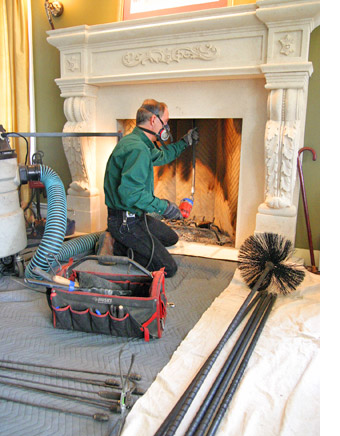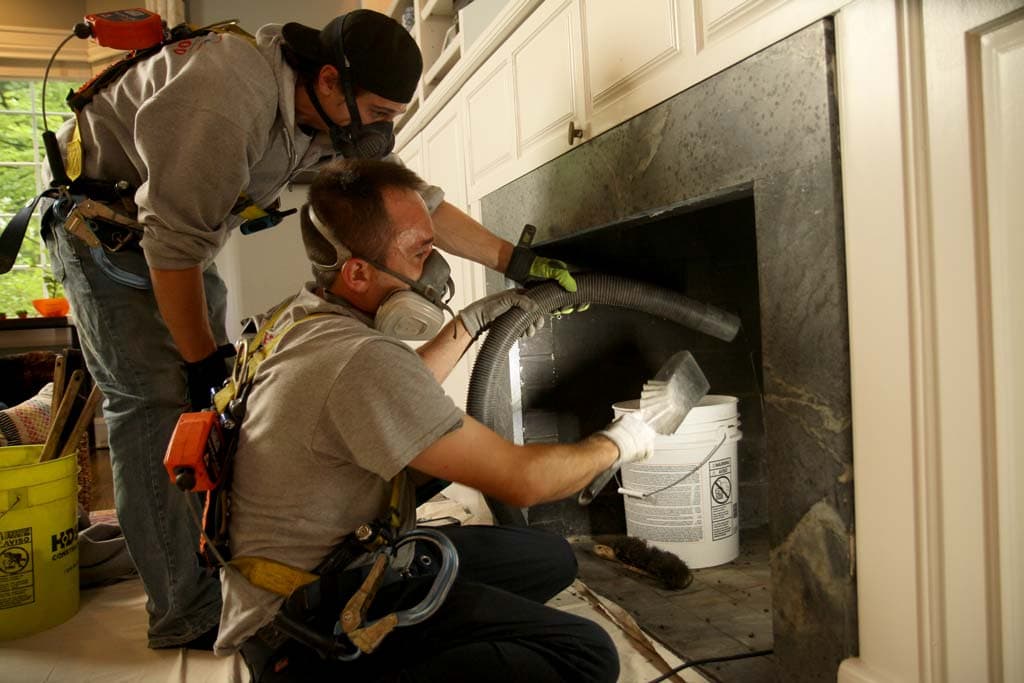Why Chimney Cleaning San Jose Providers Are Vital for Home Safety And Security
Why Chimney Cleaning San Jose Providers Are Vital for Home Safety And Security
Blog Article
Checking Out the Different Kinds of Smokeshaft Cleaning Techniques: Which One Is Right for You?
Understanding the different smokeshaft cleansing approaches available is crucial for homeowners seeking to preserve their heating unit properly. From standard manual sweeping that emphasizes craftsmanship to modern-day methods such as rotary cleaning and video examinations, each technique offers distinct advantages and factors to consider. In addition, the usage of chemical solutions uses an option for those taking care of consistent deposits. As you weigh these options, it comes to be critical to examine your particular demands and the problem of your smokeshaft, prompting the question: which technique will make sure optimal efficiency and security for your home?
Typical Smokeshaft Sweeping
Traditional chimney sweeping continues to be a time-honored approach for maintaining tidy and reliable flues. This technique uses hand-operated devices and strategies that have remained in practice for centuries, highlighting both workmanship and thoroughness. The process commonly involves making use of brushes, rods, and various other specialized tools developed to get rid of soot, creosote, and blockages from the chimney's interior.
Among the key benefits of typical chimney sweeping is the direct, hands-on nature of the service, enabling the sweeper to assess the condition of the chimney while cleansing. This technique guarantees that the entire flue is inspected for architectural integrity and prospective hazards, such as cracks or blockages brought on by debris or animal nests.

Rotating Cleaning Up Techniques
Rotating cleaning techniques represent a modern innovation in chimney maintenance, offering an efficient choice to conventional sweeping approaches. These methods make use of a mechanical rotating brush, powered by a flexible pole system that can navigate the twists and turns of various chimney flues. This style allows the brush to successfully scrub the flue walls, removing soot, creosote, and other obstructions more extensively than hands-on approaches.
One of the key advantages of rotating cleansing is its ability to reach areas that may be challenging for standard brushes to accessibility, ensuring a much more extensive cleansing process. This approach not only saves time yet additionally reduces the physical labor associated with chimney upkeep. In addition, it minimizes the risk of damaging the chimney framework, as the rotary brush is developed to adapt to different flue shapes and sizes.
Rotary cleansing methods can be specifically useful for house owners with hefty soot buildup or those who utilize their chimneys often. While it is important to use experienced professionals for this service, the performance of rotating cleansing makes it an engaging choice for preserving chimney safety and effectiveness.
Video Evaluation Techniques
Developments in innovation have introduced video clip assessment methods as an essential device for chimney upkeep, permitting service technicians to examine the indoor problem of flues with impressive accuracy. This cutting-edge approach utilizes high-resolution video cameras connected to flexible cable televisions, enabling detailed assessment of smokeshaft systems without invasive procedures.
Video clip inspection is specifically important for recognizing usual concerns such as creosote buildup, clogs, architectural damage, and flue wear and tear. The images captured supplies a clear and comprehensive representation of the chimney's interior, permitting technicians to make informed choices pertaining to needed fixings or cleansing methods.
Furthermore, the ability to record findings through video clip recordings functions as a beneficial recommendation for homeowners and experts alike. This documentation can assist in discussions concerning maintenance demands and aid in monitoring modifications gradually.


Furthermore, video inspections can be performed successfully, often needing less time than traditional evaluation techniques. Consequently, home owners can enjoy comfort, understanding their chimneys are being examined making use of modern technology. Inevitably, video clip evaluation methods are transforming chimney maintenance, enhancing safety, effectiveness, and the efficiency of subsequent cleansing and repair work procedures.
Chemical Cleansing Solutions
Chemical cleansing options stand for an efficient technique for keeping chimney systems, particularly in resolving creosote buildup and residue down payments. chimney cleaning san jose. These services generally consist of active ingredients developed to break down these unsafe materials, therefore assisting in less complicated removal and promoting a safer smokeshaft environment
One of the main advantages of chemical cleansing services is their convenience of application. This procedure helps to loosen up creosote and soot, making it look at this website extra workable for succeeding cleansing efforts.
Nevertheless, it is important to choose the ideal product, as not all chemical solutions are created equivalent. Some may consist of severe chemicals that might damage chimney linings or produce dangerous fumes. It is advisable to consult a professional or perform complete research study to choose a service that is both effective and safe for your particular chimney type.
Do It Yourself Smokeshaft Cleaning Tips
Keeping a clean chimney is crucial for making sure the security and effectiveness of your fireplace, and several house owners decide for do it yourself cleaning approaches to tackle this crucial task. Prior to starting, collect the required tools: a smokeshaft brush, expansion rods, a vacuum, and protective equipment such as gloves and safety glasses.
Begin by analyzing the problem of your chimney; if there are significant clogs or architectural problems, take into consideration site working with an expert rather. For small soot accumulation, attach the chimney brush to the extension rods and work from the top down, guaranteeing complete protection of the flue. Regularly examine for any particles that can obstruct airflow.
It's also suggested to utilize a vacuum to collect residue and creosote as you clean up. This will reduce mess and lower the inhalation of harmful bits. After cleaning, examine the chimney for any fractures or indicators of wear and take into consideration applying a site web chimney cap to stop future clogs.
To keep your smokeshaft's cleanliness, establish a regular cleansing routine based on use; typically, this would certainly be once a year, or much more regularly if you utilize your fireplace usually. By adhering to these DIY tips, you can make sure a safer and a lot more efficient fireplace experience.
Final Thought

Report this page